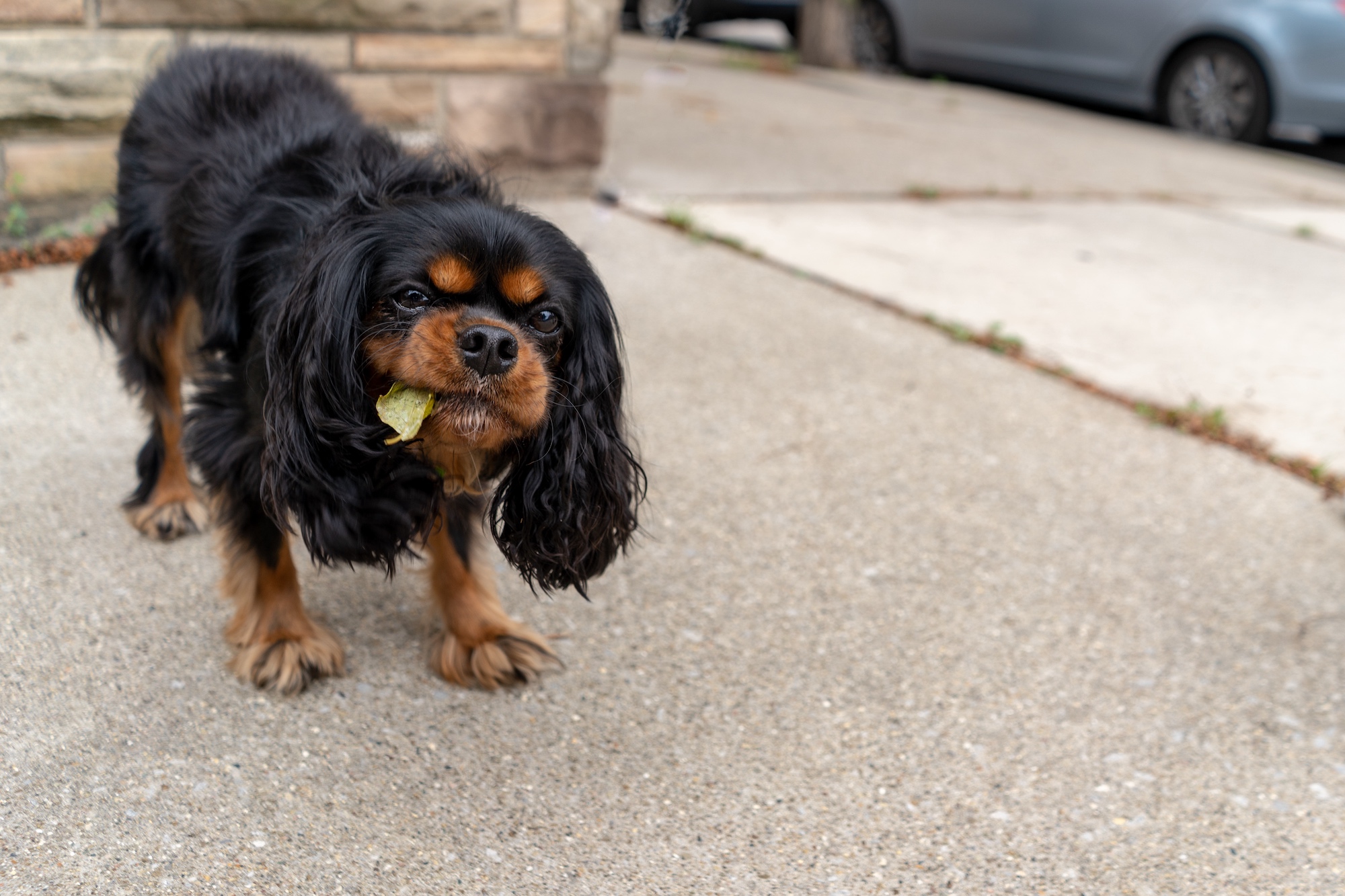Pica is a disorder in which dogs compulsively eat things that aren’t food. Before you start to worry too much, chewing on an old sneaker probably doesn’t indicate pica. We all know some dogs simply can’t resist the lure of gnawing on an object that doesn’t belong to them. But consistently ingesting inedible things such as clothing, garbage, paper, dirt, plastic, rocks, and even metal (yes, really) is a key sign of the condition.
One of the most common form of pica is consuming feces, also known as coprophagia. Obviously, depending on what your dog eats, and the quantities, pica can become a life-threatening emergency.
The condition occurs most often in adolescent and adult dogs; curious puppies put everything in their mouths as a way of exploring their world, and that’s normal. (They tend to outgrow that phase as they mature.) Continued consumption of non-food substances into adolescence is a sign you should reach out to your vet to get to the bottom of the issue.
What causes pica?
Medical conditions such as anemia, inflammatory bowel disease (IBD), hyperthyroidism, and nutritional deficiencies can bring on pica, as can taking certain corticosteroids and anti-seizure medications, since they increase dogs’ appetites.
Perhaps more commonly, the condition can arise from mental health issues such as boredom, depression, and anxiety. In these cases, to eliminate the compulsive behavior you’ll need to address the underlying causes: why is your dog experiencing more stress? Has something changed at home to make your dog feel anxious, such as increased daytime separation, or a new baby or pet addition to the household? Is your dog getting adequate exercise? Does your dog generally get enough mental stimulation during the day?
Note that high-energy breeds of dog may be more prone to pica when they get insufficient exercise. Providing long daily walks, runs, or games of fetch may prove helpful, as well as redirecting attention by providing interactive toys or safe chew toys. No matter the breed of your dog, creating an enriching environment and providing mental and physical exercise are key to their well-being. Sometimes this requires getting creative to find new ways to help your dog burn off extra energy through healthy outlets.
If you’re out in the daytime, or need to make sure your dog stays safe while you’re busy, you might need to use a crate or limit the room(s) where they can be, while pica is an active issue (our guide to crate training can help).
What are the dangers of pica?
Pica can result in a life-threatening situation when an ingested object causes your dog to choke or causes a blockage in the intestinal tract. There’s also a chance your dog may also consume something toxic. If you suspect your dog has swallowed something dangerous, take them to the vet or an emergency vet clinic as quickly as possible.
What are some signs of pica?
- Vomiting
- Diarrhea
- Coughing
- Bloated stomach
- More drooling than usual
- Visible distress
- Black or tarry stool
How is pica diagnosed and treated?
The first step in treating pica is getting help from your vet, who can discuss your dog’s nutritional needs and identify any deficiencies. They will help you determine whether the cause may be underlying conditions such as anxiety or depression. The vet may do a behavioral consult and physical exam, and also run blood tests, a fecal check, and urinalysis.
Depending on whether the cause of pica is behavioral or medical, your vet will decide on a suitable treatment; for example, if the cause is deemed to be anxiety, your vet can guide you on strategies to modify your dog’s behavior. In certain instances, your vet might suggest hiring a trainer to work with your dog.
If your dog has pica and ingests a dangerous object, bring them to the clinic for an emergency appointment. In the event of a gastrointestinal blockage from the inappropriate object, they will need X-rays or an abdominal ultrasound to identify where the obstruction is, and will likely need to be hospitalized for care and possibly a surgical procedure. This will require general anesthesia, and follow up visits to check on the incision and monitor healing post-surgery.
Whatever the source of pica, you can expect subsequent visits to make sure the cause is fully identified, the treatments are effective, and to come up with a new plan if the pica persists.










